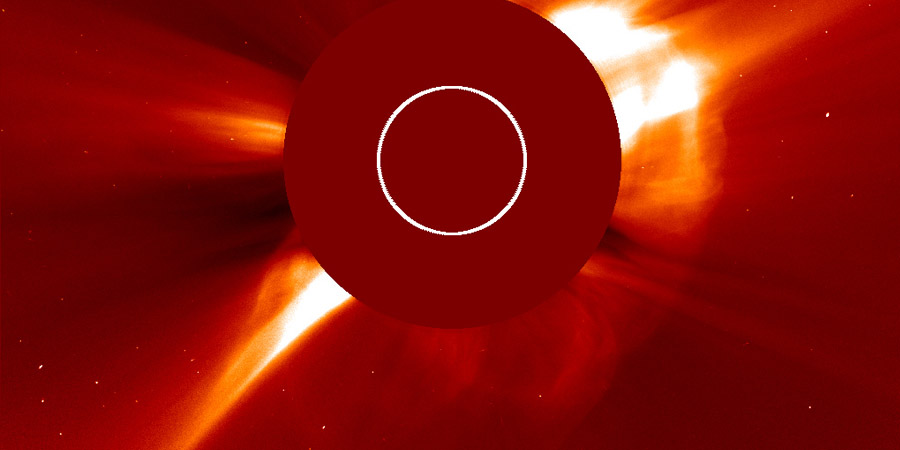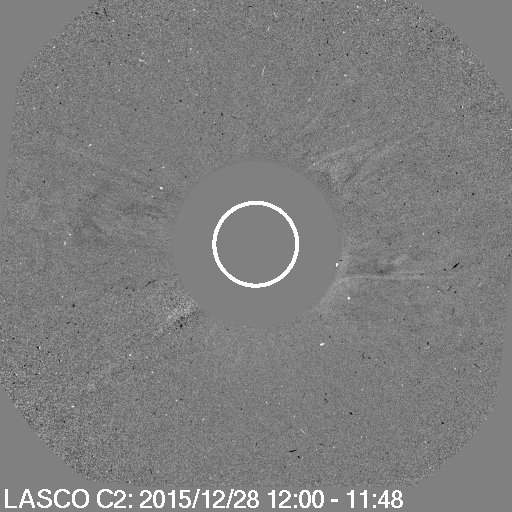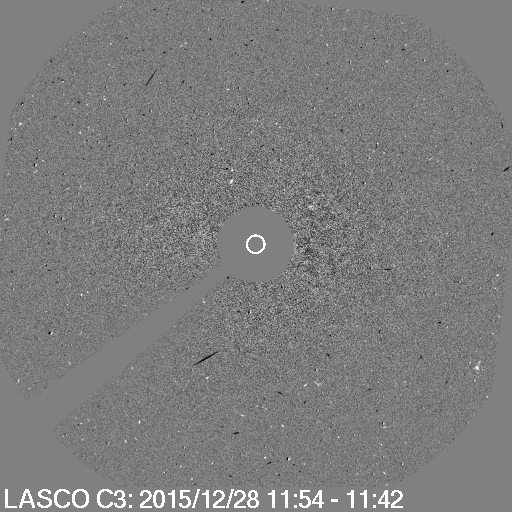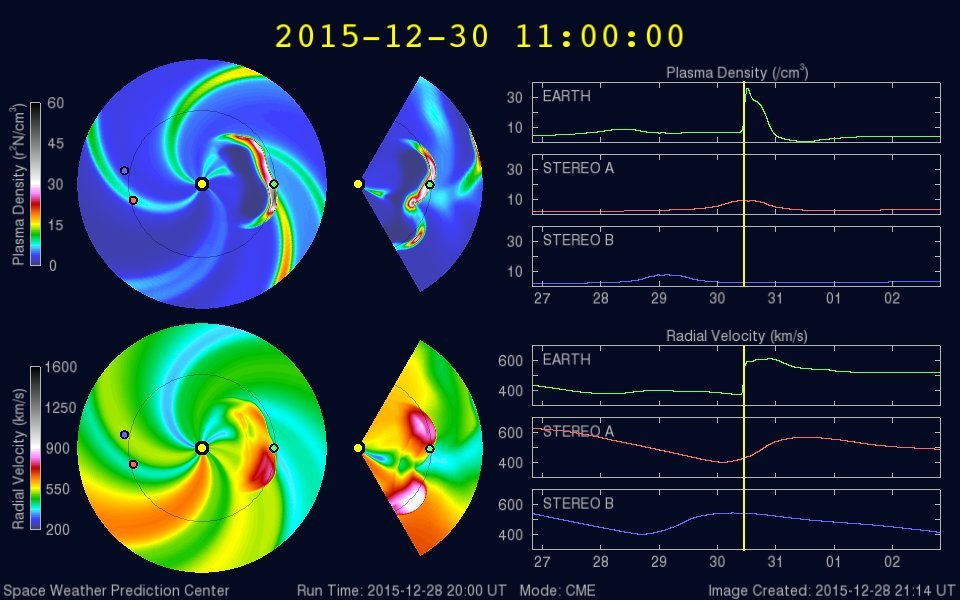M1.8 coronal mass ejection
Tuesday, 29 December 2015 00:18 UTC

Sunspot region 2473 produced a long duration M1.8 solar flare yesterday that produced a coronal mass ejection which was launched towards Earth.
For more details about the solar flare be sure to read our news item from yesterday.
A bright coronal mass ejection was launched but we are a little dissapointed with the angular extend of this coronal mass ejection. Where you'd expect a full halo coronal mass ejection from a sunspot region that's in a great earth-facing position, all that we got was a partial halo coronal mass ejection. The animations below show no obvious ejected material towards the north. While we do expect an impact at Earth from this eruption, it might not be a full head on collision.


Animations: SOHO/LASCO C2 and C3 coronagraph animations showing the partial halo CME.
The SIDC and their CACtus software gives us a speed just over 600km/s with a slightly faster component towards the SE. This seems fairly accurate to us. By using this speed and taking into account the current background solar wind speed we estimate that this coronal mass ejection is likely to arrive around 1:00 UTC (plus/minus 6 hours) on the last day of this year, 31 December. Minor G1 geomagnetic storm conditions are likely on 31 December when the cloud arrives and moderate G2 geomagnetic storm conditions can not be excluded if the direction of the IMF cooperates.
Fireworks and aurora? Who knows! It might happen!
NOAA SWPC
That was our own forecast which we are proud to say have been fairly accurate the past years. The official NOAA SWPC's forecast reveals that they think that this coronal mass ejection is traveling much faster and their ENLIL model estimates that this coronal mass ejection will arrive around 11:00 UTC on 30 December. The NOAA SWPC expects moderate G2 geomagnetic storming on 30 December and minor G1 geomagnetic storming on 31 December.

So as always, a lot of uncertainty between all the different forecasts. NASA and the SIDC also have different impact as you can see below. We recommend to just keep an eye on the solar wind data tomorrow and on the 31st and see what will happen. You can also sign up for our Twitter alerts where our automated CME detection system tweets once a CME impact has been detected.
| Organisation | Day | Time |
|---|---|---|
| NOAA SWPC (ENLIL) | Wednesday 30 December | 11:00 UTC |
| NASA (ENLIL) | Wednesday 30 December | 18:00 UTC |
| SIDC | Wednesday 30 December | 21:00 UTC |
| SpaceWeatherLive | Thursday 31 December | 01:00 UTC |
Thank you for reading this article! Did you have any trouble with the technical terms used in this article? Our help section is the place to be where you can find in-depth articles, a FAQ and a list with common abbreviations. Still puzzled? Just post on our forum where we will help you the best we can!
Latest news
Latest forum messages
Support SpaceWeatherLive.com!
A lot of people come to SpaceWeatherLive to follow the Sun's activity or if there is aurora to be seen, but with more traffic comes higher server costs. Consider a donation if you enjoy SpaceWeatherLive so we can keep the website online!

Space weather facts
| Last X-flare | 2025/03/28 | X1.1 |
| Last M-flare | 2025/03/31 | M1.2 |
| Last geomagnetic storm | 2025/03/27 | Kp5 (G1) |
| Spotless days | |
|---|---|
| Last spotless day | 2022/06/08 |
| Monthly mean Sunspot Number | |
|---|---|
| February 2025 | 154.6 +17.6 |
| Last 30 days | 127.7 -23.5 |


